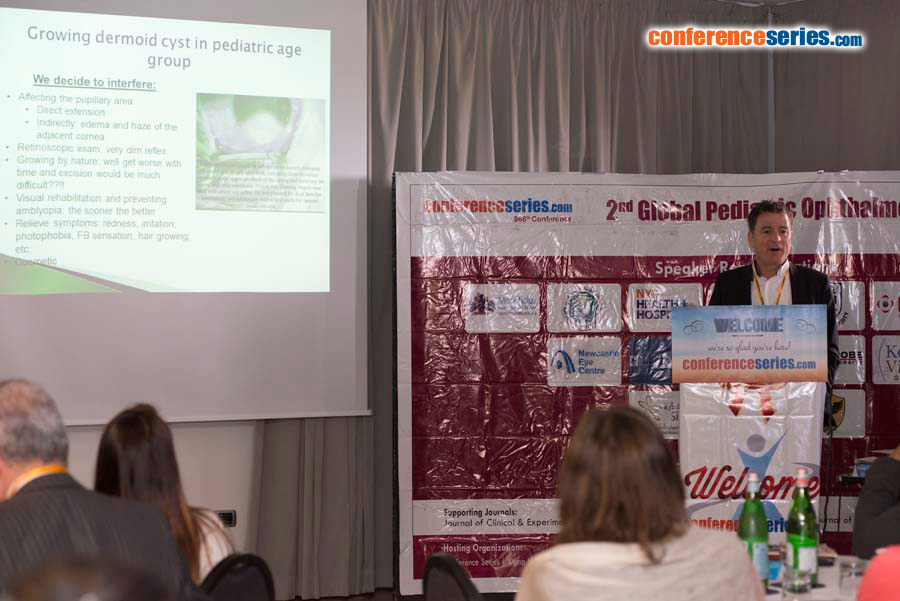
Elias F Jarade
Beirut Eye Specialist Hospital, Lebanon
Title: Pediatric keratoconus in a tertiary referral center: Incidence, presentation, risk factors, and treatment
Biography
Biography: Elias F Jarade
Abstract
Purpose: To report the incidence, clinical presentation, risk factors, and treatment outcome of pediatric keratoconus in a tertiary referral eye hospital in Beirut, Lebanon.
Methods: In this retrospective study, the authors evaluated all patients with keratoconus 14 years or younger newly diagnosed at the Beirut Eye Specialist Hospital, Beirut, Lebanon, between January 2010 and December 2014. The incidence of pediatric keratoconus among all pediatric patients and among patients with keratoconus of all ages was assessed. Patients with pediatric keratoconus were evaluated for keratoconus stage, initial presentation, uncorrected distance visual acuity, corrected distance visual acuity (CDVA), corneal topography, and pachymetry. Patients were classified according to different treatment regimen groups and different follow-up visits were evaluated.
Results: During 5 years, 16,808 patients were examined, of whom 2,972 were 14 years or younger. A total of 541 patients were diagnosed as having keratoconus; of those, 16 were 14 years or younger at the time of diagnosis. Hence, the incidence of keratoconus was 0.53% among pediatric patients and 3.78% among adult patients (>14 years). Initial presentation was during routine checkup (1 of 16) for allergic conjunctivitis (3 of 16), reduced vision (10 of 16), and corneal hydrops (mimicking keratitis) (2 of 16). Except for 2 patients lost to follow-up, all eyes received corneal cross-linking treatment and 16 eyes received additional intracorneal ring segment implantation.
Conclusions: The incidence of pediatric keratoconus indicates that increased awareness for keratoconus among children is needed, mainly in cases of family history of keratoconus, ocular allergy/pruritus, poor CDVA, corneal hydrops, and/or high astigmatism.


